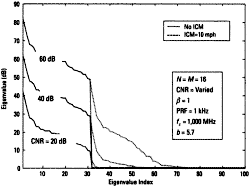 All RF Cafe Quizzes make great fodder for
employment interviews for technicians or engineers - particularly those who are
fresh out of school or are relatively new to the work world. Come to think of it,
they would make equally excellent study material for the same persons who are going
to be interviewed for a job. Bonne chance, Viel Glück, がんばろう,
buena suerte, удачи, in bocca al lupo, 행운을 빕니다,
ádh mór, בהצלחה, lykke til, 祝你好運.
Well, you know what I mean: Good luck! All RF Cafe Quizzes make great fodder for
employment interviews for technicians or engineers - particularly those who are
fresh out of school or are relatively new to the work world. Come to think of it,
they would make equally excellent study material for the same persons who are going
to be interviewed for a job. Bonne chance, Viel Glück, がんばろう,
buena suerte, удачи, in bocca al lupo, 행운을 빕니다,
ádh mór, בהצלחה, lykke til, 祝你好運.
Well, you know what I mean: Good luck!
Click here for the complete list of
RF Cafe Quizzes.
Note: Some material based on books have quoted passages.
 This
quiz is based on the information presented in
Space-Time Adaptive Processing for Radar, by J. R. Guerci. This
quiz is based on the information presented in
Space-Time Adaptive Processing for Radar, by J. R. Guerci.
Note: Some of these books are available as prizes in the monthly
RF Cafe Giveaway
"Space-time adaptive processing (STAP) is an exciting technology for advanced radar systems that allows for significant
performance enhancements over conventional approaches. Based on a time-tested course taught in industry, government
and academia, this second edition reviews basic STAP concepts and methods, placing emphasis on implementation in
real-world systems. It addresses the needs of radar engineers who are seeking to apply effective STAP techniques
to their systems, and serves as an excellent reference for non-radar specialists with an interest in the signal
processing applications of STAP. "
1. What was the original application of Space-Time Adaptive Processing (STAP)?
a) Moving target indication (MTI) radar b) The Strategic Defense Initiative (SDI, aka 'Star Wars')
c) Time travel d) Atomic time standards
2. Why is moving target indication processing needed?
a) For better angle of arrival (AoA) determination b) To enable detection of non-stationary objects
within a background of stationary objects c) It satisfies DoD contract requirements d) To cancel
out moving objects so stationary objects can be seen
3. What advantage does narrowband (c/B >> Nd) electromagnetic plane wave provide?
B = modulation bandwidth, N = number of elements, d = interelement spacing
a) Greater power efficiency b) More planar than a non-planar wave c) Tangential coordinates
improve reception d) Insures propagation across the array is manifested as a simple phase shift.
4. What are two key physical observables for MTI processing?
a) Aircraft and watercraft b) Doppler frequency and angle of arrival (AoA) c) Moving
fixed targets and fixed moving targets d) Power and amplitude
5. What are ramifications on adaptive processing due to variability in clutter terrain and other
interference nonstationaries?
a) Unlimited theoretical sensitivity b) Unlimited theoretical number of targets c) They
place practical limits on the size and quality of training data available d) All of the above
6. What mathematical form does 'colored' noise take?
a) A 2nd-degree polynomial b) A nondiagonal covariance matrix c) A complex hyperbolic
tangential rhomboid d) We say 'noise of color,' not 'colored noise'
 7.
What is "the iceberg effect" (see chart at right)? 7.
What is "the iceberg effect" (see chart at right)?
a) Ground clutter provides a chilling effect on returns b) Increase in interference rank with
increasing CNR due to realistic physical limitations c) A phenomenon where ice degrades radar performance
d) High power radar melts ice exponentially with applied amplitude
8. What is another name for a structured-covariance method of STAP?
a) The covariance-structured method b) The iceberg method c) The Gureci method d)
The model-based method
9. For which case is the max SINR (signal-to-interference-plus-noise-ratio) beamformer statistically
optimal?
a) Additive Gaussian interference b) Coherent random clutter c) Incoherent predictive
clutter d) None of the above
10. What is a major advantage to radar clutter returns of having a prediction horizon on the
order of only seconds?
a) A significant degree of determination, and thus predictability b) Slow-moving aircraft can
be utilized c) Slow-moving targets can be ignored d) Fixed object like buildings can be cancelled
out
Need some help? Click here for the
answers
and explanations.
|










